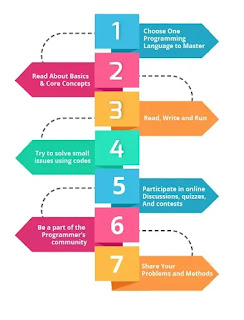Coding & Tech Basics: Your Gateway to the Digital Future
In an increasingly digital world, understanding the basics of coding and technology isn’t just useful—it’s essential. Whether you want to build a website, automate a task, create an app, or simply understand how the tech around you works, learning to code opens doors to creativity, innovation, and career opportunities.
💻 What Is Coding?
Coding is the process of writing instructions that computers can understand and execute. It’s the backbone of everything from websites and apps to games and artificial intelligence.
Think of it like this:
Coding is how humans communicate with machines.
Software is what brings that communication to life.
🔧 Why Learn Tech Basics?
You don’t have to be a computer science major to benefit from coding skills. In fact, here’s how even a little tech knowledge can boost your life and career:
-
💼 Career Edge: Coding skills are in demand across every industry—from marketing to medicine.
-
🧠 Problem-Solving: Learn how to break down complex tasks into manageable steps.
-
🌍 Digital Literacy: Understand how apps, websites, and data actually work.
-
🛠️ Build Stuff: Make your own tools, websites, or passion projects.
🚀 Popular Beginner Coding Languages
If you’re new to tech, here are a few languages to explore:
-
HTML/CSS: Great for building websites.
-
Python: Perfect for beginners, automation, AI, and data.
-
JavaScript: Essential for web interactivity.
-
Scratch: A fun, visual language for absolute beginners and kids.
-
SQL: Useful for managing and querying data in databases.
📚 5 Best Books to Learn Coding & Tech Basics
Looking for a beginner-friendly guide to dive into the tech world? These five books are highly recommended:
1. "Python Crash Course" by Eric Matthes
🐍 One of the best beginner guides to coding with Python—great for building real projects quickly.
2. "Automate the Boring Stuff with Python" by Al Sweigart
⚙️ Learn how to use Python to automate everyday tasks—ideal for professionals and hobbyists.
3. "HTML and CSS: Design and Build Websites" by Jon Duckett
🌐 A beautifully designed and easy-to-understand guide for web development newbies.
4. "JavaScript and JQuery: Interactive Front-End Web Development" by Jon Duckett
💡 A visual guide to making websites dynamic and interactive with JavaScript.
5. "Code: The Hidden Language of Computer Hardware and Software" by Charles Petzold
🔍 A deeper look into how computers work from the ground up—perfect for curious minds.
🧠 Tips for Getting Started in Tech
-
🎯 Start small: Try a free coding course or app like Codecademy, Khan Academy, or freeCodeCamp.
-
📅 Practice regularly: 20 minutes a day is more powerful than 2 hours once a week.
-
❓ Ask for help: Join communities like Stack Overflow, GitHub, or Reddit’s r/learnprogramming.
-
📁 Work on projects: Nothing reinforces learning like building something real.
-
🚀 Stay curious: The tech world evolves fast—so always be learning.
🔚 Final Thoughts
Coding is not just for developers anymore—it’s becoming a core skill for the modern world. Whether you’re 15 or 50, now is the perfect time to start learning.
“Everyone should learn how to program a computer... because it teaches you how to think.” — Steve Jobs
👉 Ready to code your future?
Which book or language are you starting with? Drop a comment below and let’s learn together! 💬💡

Comments
Post a Comment